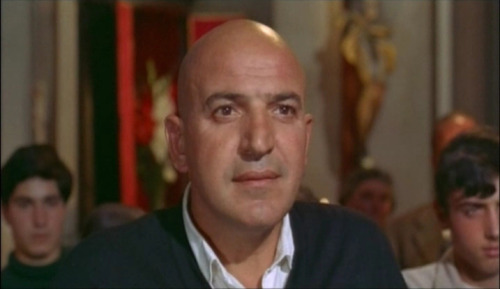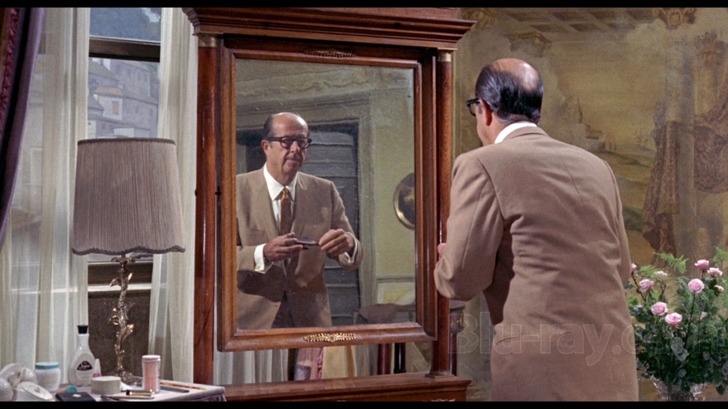Why has the comedy of “Buona Sera, Mrs. Campbell” endured through the decades?
Quick Answer: The basis for Mamma Mia!, lesser-known Buona Sera, Mrs. Campbell features a well-constructed ensemble cast that took many of its actors away from their typical roles. The film’s talents, aesthetic and legacy as Mamma Mia!‘s predecessor have helped it survive the ages.
Despite serving as the basis for the globally-acclaimed Broadway show and film Mamma Mia! (2008), the Italian-American comedy Buona Sera, Mrs. Campbell (1968) is a little-known picture almost 50 years after its release. But for those who are aware of the film, its comedy and appeal have not lessened over the years. Some modern viewers see the film thanks to Mamma Mia!; others for a performance by Rat Pack member Peter Lawford; and many for its star, Gina Lollobrigida, the internationally known sex symbol who dons fiery red hair for the uncharacteristically comedic role which many regard as the finest in her acting career. Whatever the reason, Mrs. Campbell has endured thanks to its believably outrageous story, its legacy in inspiring other works and the wonderful performances of its ensemble cast.

Gina Lollobrigida in Buona Sera, Mrs. Campbell (1968)
Carla Campbell (Lollobrigida) maintains she is the widowed bride of Eddie Campbell, a soldier who died in combat shortly after she conceived their daughter, Gina (Janet Margolin). In reality, at the age of sixteen, Carla spent ten days with three separate soldiers stationed in her town, and any one of them could be Gina’s dad. She has been receiving checks from each man for 20 years, took the name Campbell from a soup can, and has maintained her cover story until now — the men are returning to Italy for a war anniversary, and Gina is home from school. The men, Justin (Peter Lawford), Phil (Phil Silvers), and Walter (Telly Savalas) all want to see their daughter.

Telly Savalas in Buona Sera, Mrs. Campbell (1968)
One great strength of the film is its casting of actors outside their typical roles. Telly Savalas’ usual swagger is traded for a giddy, sweet personality in Walter Braddock. The scenes between him and his wife Fritzie (Lee Grant) are some of the film’s best comedy, their quibbling underpinned by a resentment stemming from their absence of children. This lack of offspring brings a believable power to Walter’s affection for Gina, and their scenes are alive with father-daughter chemistry.
Meanwhile, Phil Silvers breaks away from Sgt. Bilko, the character with which most viewers of the time would associate him. He’s a stressed dad with three wild sons, making it easy to believe that a collected, older daughter would appeal to him. His wife (second-billed Shelley Winters as Shirley Newman) serves as a great connecting agent between the three men, the three wives, and Mrs. Campbell, eventually uprooting the masquerade and bringing the truth to everyone’s eyes. Winters’ career to this point was heavily dramatic, but she made a turn towards comedy following this film in the later part of her career.

Marian Moses and Peter Lawford in Buona Sera, Mrs. Campbell (1968)
Beyond the uncharacteristic performances which service the comedy, Mrs. Campbell succeeds in bringing depth to each individual couple, providing each with their own identity and story. Unlike Mamma Mia!, which thinly tells of three unique fathers who have no other connections, each of the men in Mrs. Campbell comes with a family, a history and individual burdens. Silvers and Winters are the happiest; Walter and Fritzie are in love with each other but at odds over their childless status; and Justin and his wife Lauren (Marian Moses) regard each other with a casual disdain that never quite seems warranted. Regardless, each of the couples is unique, and their well-drawn characteristics make it enjoyable for the viewer to imagine how Carla fell for each of them as a teen (picturing young Lollobrigida in bed with Phil Silvers is comedy in itself).

Phil Silvers in Buona Sera, Mrs. Campbell (1968)
Carla Campbell is not without her own current relationship — her connection to Vittorio (Philippe Leroy) is electric and exciting. Vittorio obviously values the relationship more than Carla, creating an uneven dynamic, as he both works for her and stands as her lover. He serves as her conscience and moral center, as well as a loyal boyfriend and employee. The events of the plot fill his character with inner conflict, as he facilitates her lies while attempting to keep her on a straight path.
Mamma Mia! has proven the story of this film to be timelessly entertaining, but the original is rich with its own merits. The photography and aesthetic of the 1960s-shot Mrs. Campbell now looks retro and enthusiastic, rich with the colors and earthiness of classic Italian cinema, while the slamming doors and physical pranks hit all the high notes of a raucous bedroom comedy.

